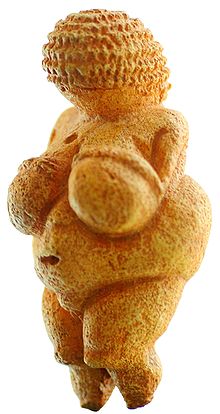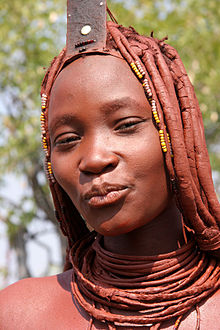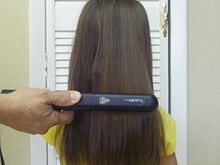The New Hair Style
"Haircut" redirects here. For other uses, see Haircut (disambiguation)."Hairdo" redirects here. For the Little Birdy song, see Hairdo (song).
- 1 Prehistory and history
- 1.1 Paleolithic
- 1.2 Bronze Age
- 1.3 Ancient history
- 1.4 Roman Empire and Middle Ages
- 1.5 Early modern history
- 1.5.1 Male styles
- 1.5.2 Female styles
- 1.5.3 Japan
- 1.6 Inter-war years
- 1.7 Post-war years
- 1.8 Contemporary hairstyles
- 2 Defining factors
- 3 Hairstyle process
- 4 Industry
- 5 Social and cultural implications
- 6 Haircut in space
- 7 See also
Prehistory and history
Paleolithic
Bronze Age
Ancient history
Roman Empire and Middle Ages
Early modern history
Male styles
Female styles
Japan
In the early 1870s, in a shift that historians attribute to the influence of the West,[22] Japanese men began cutting their hair into styles known as jangiri or zangiri (which roughly means "random cropping").[23] During this period, Asian women were still wearing traditional hairstyles held up with combs, pins and sticks crafted from tortoise, metal, wood and other materials,[11] but in the middle 1880s, upper-class Japanese women began pushing back their hair in the Western style (known as sokuhatsu), or adopting Westernized versions of traditional Japanese hairstyles (these were called yakaimaki, or literally, soirée chignon).[23]
Inter-war years
During the First World War, women around the world started to shift to shorter hairstyles that were easier to manage. In the 1920s women started for the first time to bob, shingle and crop their hair, often covering it with small head-hugging cloche hats. In Korea, the bob was called tanbal.[24] Women began marcelling their hair, creating deep waves in it using heated scissor irons. Durable permanent wavingbecame popular also in this period:[25] it was an expensive, uncomfortable and time-consuming process, in which the hair was put in curlersand inserted into a steam or dry heat machine. During the 1930s women began to wear their hair slightly longer, in pageboys, bobs or waves and curls.[10]
Post-war years
Contemporary hairstyles[
Since the 1970s, women have worn their hair in a wide variety of fairly natural styles. In the 1980s, women pulled back their hair withscrunchies, stretchy ponytail holders made from cloth over fabric bands. Women also often wear glittery ornaments today, as well as claw-style barrettes used to secure ponytails and other upswept or partially upswept hairstyles.[11] Today, women and men can choose from a broad range of hairstyles, but they are still expected to wear their hair in ways that conform to gender norms: in much of the world, men with long hair and women whose hair doesn't appear carefully groomed may face various forms of discrimination, including harassment, social shaming or workplace discrimination.[31] This is somewhat less true of African-American men, who wear their hair in a variety of styles that overlap with those of African-American women, including braids and cornrows fastened with rubber bands and dreadlocks.[32]
Defining factors
Hairstyle process
Length and trimming
Brushing and combing
Drying
Braiding and updos
Curling and Straightening
Industry
Tools
ProductsStyling products aside from shampoo and conditioner are many and varied. Leave-in conditioner, conditioning treatments, mousse, gels, lotions, waxes, creams, clays, serums, oils, and sprays are used to change the texture or shape of the hair, or to hold it in place in a certain style. Applied properly, most styling products will not damage the hair apart from drying it out; most styling products contain alcohols, which can dissolve oils. Many hair products contain chemicals which can cause build-up, resulting in dull hair or a change in perceived texture.
Wigs
Functional and decorative ornaments
There are many options to adorn and arrange the hair. Hairpins, clasps, barrettes, headbands, ribbons, rubber bands, scrunchies, and combs can be used to achieve a variety of styles. There are also many decorative ornaments that, while they may have clasps to affix them to the hair, are used solely for appearance and do not aid in keeping the hair in place. In India for example, the Gajra (flower garland) is common there are heaps on hairstyles.
Social and cultural implications
Gender
Religion
Marital status
Life transitions
Social class
Haircut in space[edit]
See also
| Look up hairstyle, haircut, or hairdo in Wiktionary, the free dictionary. |
| Wikimedia Commons has media related to Hair fashion. |

















No comments:
Post a Comment